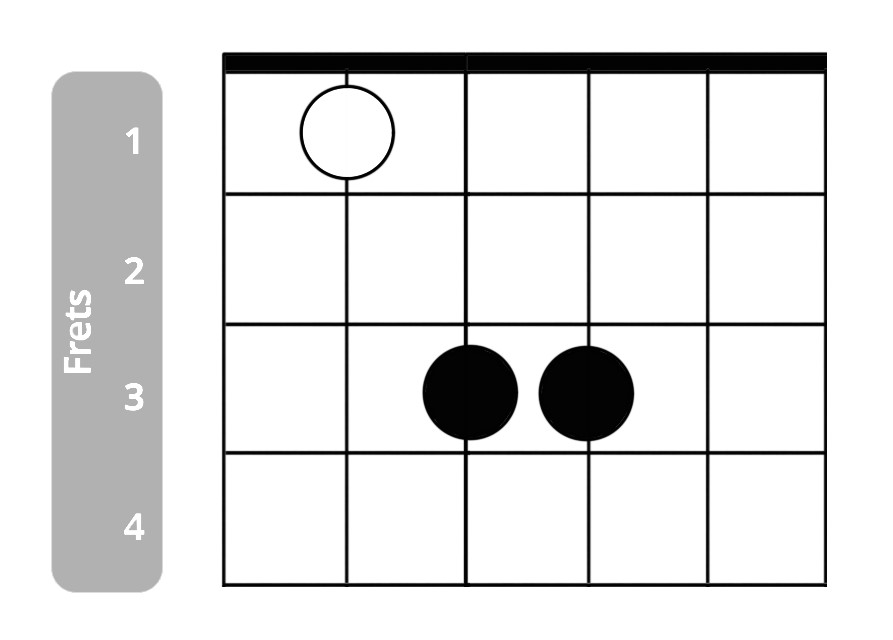
by. Sebastian Gomez
The POWER CHORD is a symbol of the guitar; of it’s character and might above other instruments.
It allows anyone to pick up a guitar and star play songs within minutes!
The shape of a Power Chord is simple and easy to learn and play. If you’ve never played one, try it now! The first is played with the root, shown as a white dot, on the E string:

The second with its root on the A string:

Sounds great right?!
It’s what I’d call a cookie cutter shape since we can stamp it out all over the neck using the same shape. Read the sheet music/TABs bellow for the song Paranoid by Black Sabbath to try these shapes out.

There is one problem with the power chord; it can lead to stale and repetitive playing, and has very few creative paths.
Let’s explore a few ways to spice up your power chords without losing thePOWER!
Higher Power Chords
First, let’s look at a higher version of the same power chord; that is, the same power chords one octave up from where they’re usually played. For an easy hack for finding octaves on the guitar read my article on How the Addams Family Taught me to Play Guitar This first example uses the D string for the root:

You might realize this looks suspiciously similar to the open D major chord, and you’d be right! It’s a D chord without holding the high E string.
You can play a combination of power chords on the D and A strings:

Or you can play them all with the root on the D string:

Our third and last level of the power chord is also used in the version above; one with the root not on the lowest string, but on the high E string:

These are INVERSIONS of our regular power chord, meaning we flipped it upside down (more on this in my next blog post). These can also be played lower on the guitar, off the E, A and D strings with the same shape:

Try Paranoid one last time in a new position.

If you’re looking for new ways to play power chords, try these out and see how it widens your chord horizons. If you’re in a band with multiple guitarists, have each guitarist try a different voicing; one playing the first version, and another playing it rooted on the D string.
Ready to improve your skills on guitar? I’m here to help! Sign up for a free lesson today.
